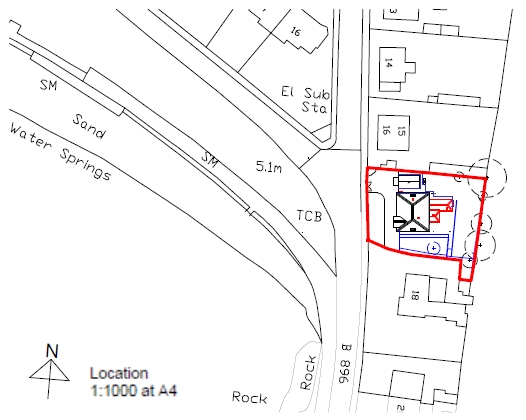Scale in the construction industry
In very general terms 'scale' refers to an item's size in relationship to something else. For example, the components of a building may be designed so they are at a human scale, ie they are comfortable to use, are functional and anthropometric, or manufacturing can be carried out at scale, rather than for one-offs..
Typically, architecture deals with different types of scale:
- Human scale: The human interaction with environments based on physical dimensions, capabilities and limits. Buildings can be designed with greater or lesser adherence to the concepts of human scale depending on the concept and purpose of the building.
- Intimate scale: This is a smaller, more personal scale.
- Monumental scale: This is much larger than human scale and is intended to be impressive, e.g. public buildings, memorials, religious buildings, and so on.
- Proportion: This refers to the relative size of parts of a whole, the relationship between two things of different size.
The term scale is also used to describe the relationship between a depiction of a building, object, area of land etc compared to its actual size. Depictions are typically drawings or physical models. Drawing accurately to scale, and being able to shift between scales, is a fundamental skill of architectural drawing and spatial design.
Scale drawings are used to illustrate items that it is not useful or convenient to draw at their actual size. In the construction industry, a range of scales are generally used depending on the nature of the drawing. For example:
- A location plan at 1:1000.
- A site plan at 1:200.
- A floor plan at 1:100.
- A room plan at 1:50.
- A component drawing at 1:5.
- An assembly drawing at 1:1.
The first number refers to the size of the depiction (such as a drawing or model), and the second number refers to the relative size of the actual item being depicted. So that on a scale of 1:5, the actual item is 5 times bigger than the depiction, whereas on a scale of 5:1, the item is 5 times smaller.
By referring to a drawing or model as being ‘to scale’, it means that every element of it is represented to the same proportion, i.e. with the same relationships as the physical thing, but it is reduced or increased in size by a certain amount.
Digital depictions such as building information models (BIM) of computer aided design (CAD) drawings are generally not considered to be at a specific scale, that is, whist the relative proportions are correct, the user can zoom in or out and print drawings at whatever scale is required.
[edit] Other definitions
The Town and Country Planning (Development Management Procedure) (England) Order 2015 defines scale as: ‘the height, width and length of each building proposed within the development in relation to its surroundings.’
Urban Design Guidelines for Victoria, published by the State of Victoria (Australia) in 2016, defines scale as: ‘The size of a building in relation to its surroundings, or the size of parts or details of the building, particularly in relation to the scale of a person. Scale refers to the apparent size, not the actual size.’
[edit] Related articles on Designing Buildings Wiki
Featured articles and news
RTPI leader to become new CIOB Chief Executive Officer
Dr Victoria Hills MRTPI, FICE to take over after Caroline Gumble’s departure.
Social and affordable housing, a long term plan for delivery
The “Delivering a Decade of Renewal for Social and Affordable Housing” strategy sets out future path.
A change to adoptive architecture
Effects of global weather warming on architectural detailing, material choice and human interaction.
The proposed publicly owned and backed subsidiary of Homes England, to facilitate new homes.
How big is the problem and what can we do to mitigate the effects?
Overheating guidance and tools for building designers
A number of cool guides to help with the heat.
The UK's Modern Industrial Strategy: A 10 year plan
Previous consultation criticism, current key elements and general support with some persisting reservations.
Building Safety Regulator reforms
New roles, new staff and a new fast track service pave the way for a single construction regulator.
Architectural Technologist CPDs and Communications
CIAT CPD… and how you can do it!
Cooling centres and cool spaces
Managing extreme heat in cities by directing the public to places for heat stress relief and water sources.
Winter gardens: A brief history and warm variations
Extending the season with glass in different forms and terms.
Restoring Great Yarmouth's Winter Gardens
Transforming one of the least sustainable constructions imaginable.
Construction Skills Mission Board launch sector drive
Newly formed government and industry collaboration set strategy for recruiting an additional 100,000 construction workers a year.
New Architects Code comes into effect in September 2025
ARB Architects Code of Conduct and Practice available with ongoing consultation regarding guidance.
Welsh Skills Body (Medr) launches ambitious plan
The new skills body brings together funding and regulation of tertiary education and research for the devolved nation.
Paul Gandy FCIOB announced as next CIOB President
Former Tilbury Douglas CEO takes helm.
UK Infrastructure: A 10 Year Strategy. In brief with reactions
With the National Infrastructure and Service Transformation Authority (NISTA).
























Comments